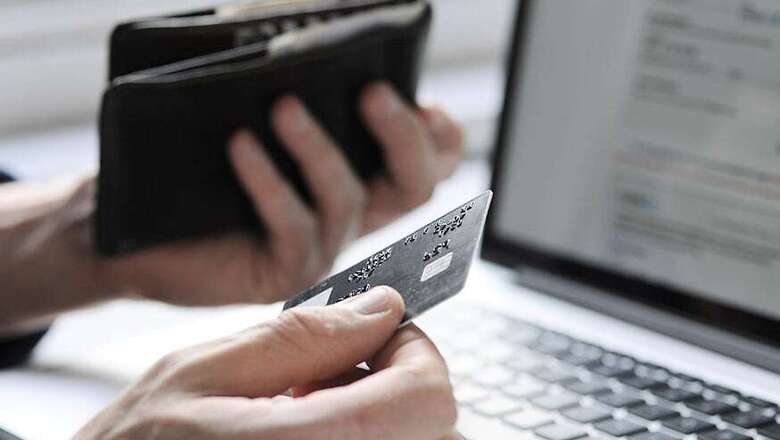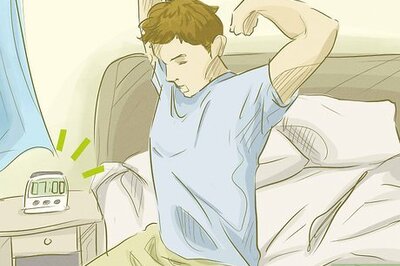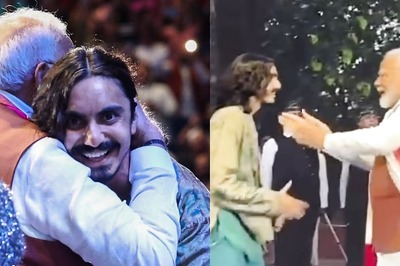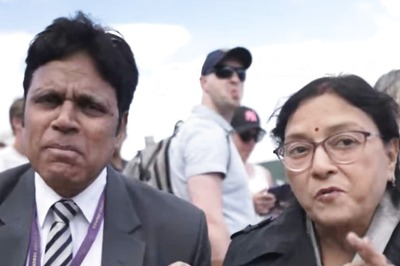
views
In an unassuming building in the Chicago suburb of Addison, United Parcel Service Inc engineers design custom boxes for retailers as part of a joint effort to tackle a vexing issue: the high cost of delivering e-commerce packages.
Online retail sales are expected to reach $392.5 billion this year, according to research firm eMarketer, but with U.S. consumers now demanding free shipping on most packages, shippers and retailers are facing a squeeze.Read more: Yahoo Reports Breach Affecting Over 1 Billion Accounts
Shippers' margins are falling or stagnating, despite steady price increases, because homes are roughly three times as expensive to deliver to as business addresses. And retailers cannot pass along the cost, because they must offer free shipping in order to compete.
The shared solution: design new, space-saving packages that can help improve package density on delivery trucks. This cuts costs for retailers and raises margins for shippers.Read more: Amazon Starts Prime Video Service, Netflix Competitor, in India
Up to 60 percent of requests handled by UPS's package laboratory are for smaller packages to cut shipping rates, the company told Reuters.
"In most cases we are able to get retailers a better rate," says Quint Marini, who runs the lab. The average rate reduction is around 20 percent, he said. Main rival FedEx Corp has a similar facility in Memphis.
The UPS lab puts new packaging through rigorous tests, piling weights on boxes, then simulating the jolts of a delivery truck traversing a bumpy road. On a recent morning, the load was too much for a box containing a furniture shipment, spilling weights over the floor as it collapsed.Read more: Sonam Gupta Bewafa Ranks Third in Google 2016 Top 10 Personalities List
"If the box can't hold the weights, we'll have to fail this one," said Jonathon McWherter, a UPS engineer conducting the test.RATES UP, MARGINS NOT
The stakes are growing. E-commerce shipments accounted for 46 percent of UPS's total volume last year, up from 36 percent in 2009. UPS expects the e-commerce share to hit 51 percent by 2019.
To counter rising costs, UPS and FedEx have raised package rates by between 4.9 percent and 5.9 percent annually since 2009. They also have levied surcharges on retailers for residential addresses and rural deliveries.
Rates for a 5-pound (2.3-kg) box traveling up to 1,400 miles (2250 km) by UPS Ground or FedEx Home Delivery have nearly doubled since 2006, to $14.18, according to SJ Consulting Group.
Despite the increases, profit margins at UPS and FedEx's U.S. domestic business have stagnated or declined in recent years, in part because they have invested billions of dollars to handle rising volumes.
(See a graphic of UPS and FedEx's rates and margins here tmsnrt.rs/2h1ig9u)
UPS and FedEx have sought new ways to cut costs, such as dropping batches of packages at urban retailers, where customers can retrieve them. Now they are focusing more on packaging, charging a fee for design services while also levying what they call 'dimensional weight' surcharges for boxes that take up too much room in relation their weight.
Retailers are hemmed in by their need to match Amazon.com Inc. The world's largest online retailer offers free shipping to customers who pay a $99 annual fee to join its Amazon Prime program — a revenue stream most retailers have not been able to replicate.
"Amazon has forced everybody into free shipping," said John Haber, head of logistics consultancy Spend Management Experts.
Amine Khechfe, co-founder of Endicia, which provides shipping services to e-commerce companies, said retailers are squeezed. "They've got the pressures of free shipping, which isn't really free, and their costs are going up," he said.'CONSUMERS DON'T CARE WHAT IT COSTS'
Many retailers have responded by procuring 'on-demand' packaging machines, which custom-tailor shipping boxes. Hanko Kiessner, CEO of Packsize International, which makes such machines and the software that drives them, estimates 16 percent of U.S. retailers are using on-demand machines, and predicts a majority will do so within three years.
Packaging "is now front and center and a glaring opportunity for improvement," Kiessner said. Packsize also collaborates on projects with UPS.
Office supply retailer Staples Inc said it has cut the weight of corrugated cardboard it uses in packaging by 65 percent, but declined to detail the cost savings.
Car accessory and electronics retailer Crutchfield Corp has saved several million dollars with on-demand packaging since August 2014, chief fulfillment officer Chris Groseclose said.
Companies like Monster Moto have worked with the UPS lab. The mini-bike maker has cut shipping costs up to 50 percent on bikes that sell for between $249 to $749, said CEO Alex Keechle.
"That was a real expense to us, and because of free shipping, we had to eat it," he said.
SJ Consulting founder Satish Jindel said retailers need to seek cost savings while also finding ways to pass on costs, such as minimum orders or membership fees.
"Any retailer who wants to be an e-commerce player and thinks consumers will have to recognize that shipping costs money and they need to pay for it, will be out of business," Jindel said. "The consumer doesn't care what it costs."




















Comments
0 comment